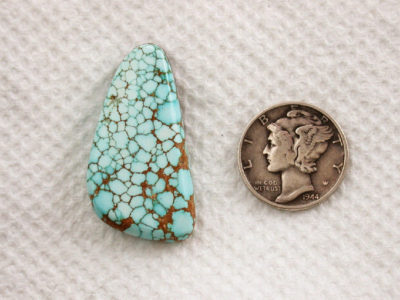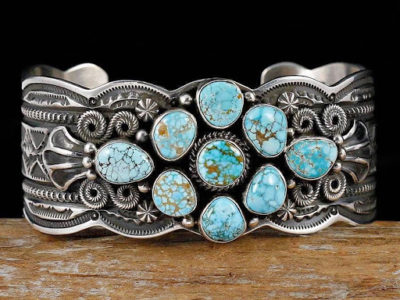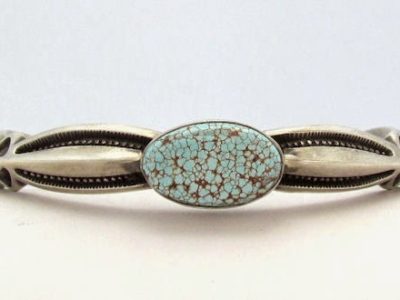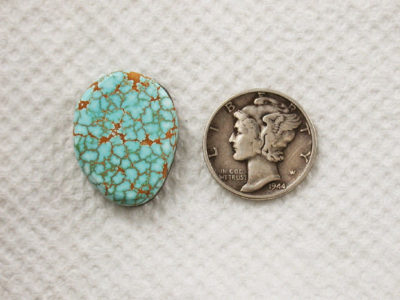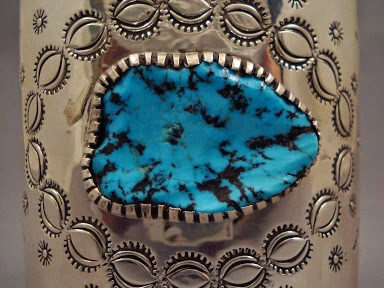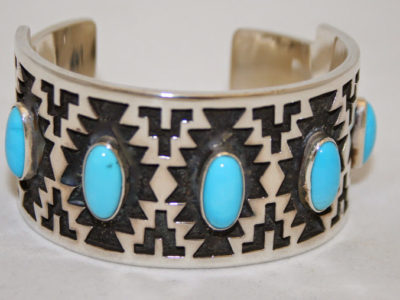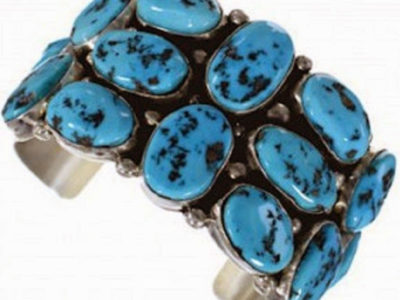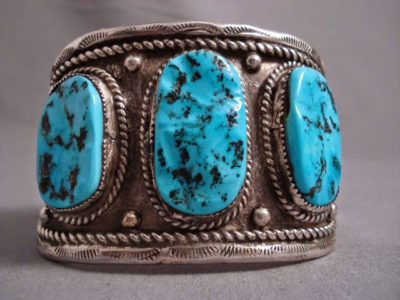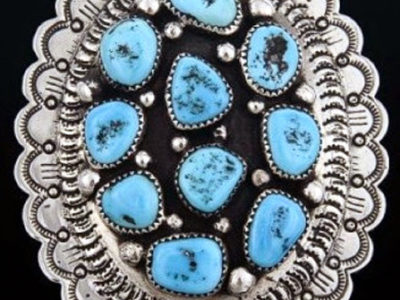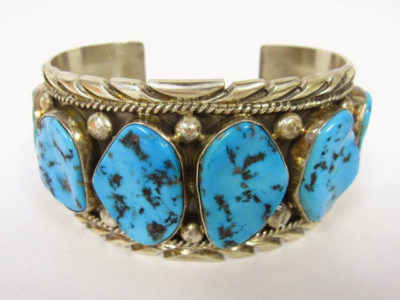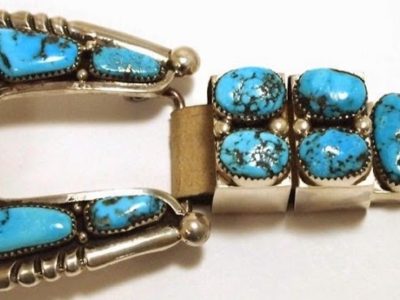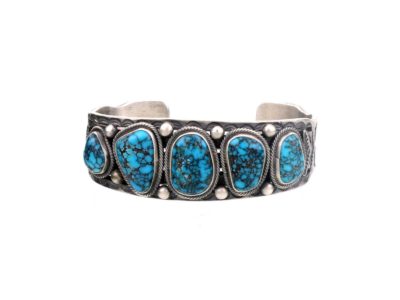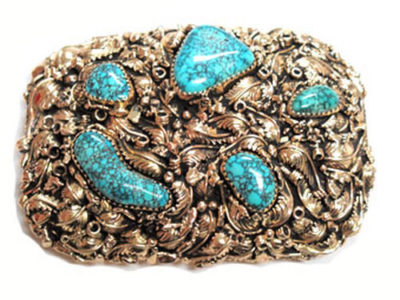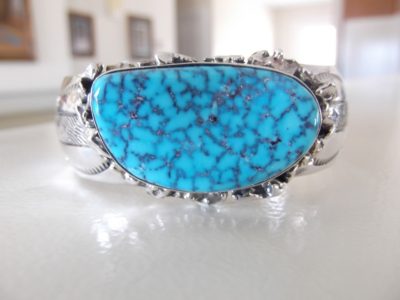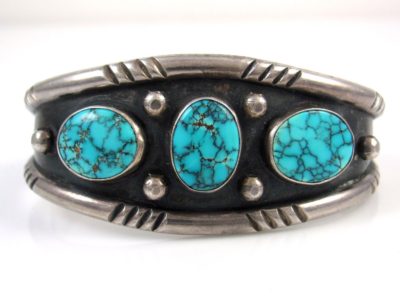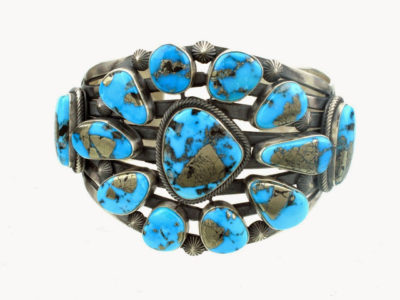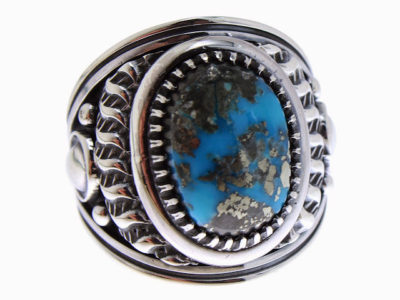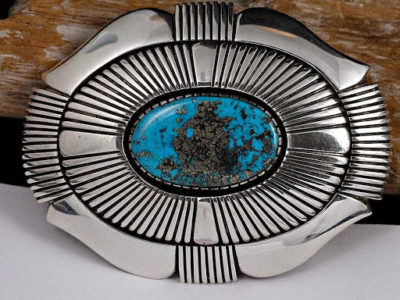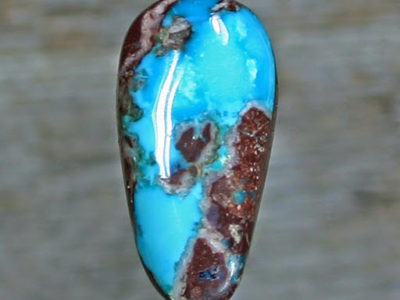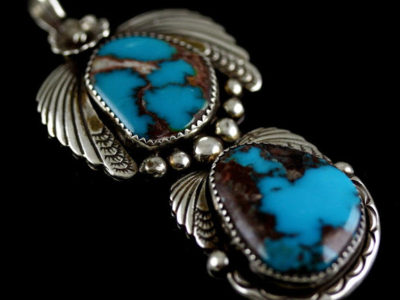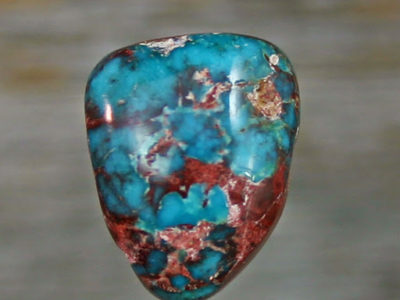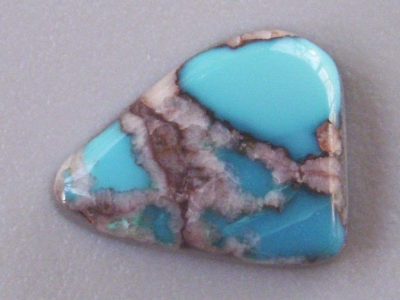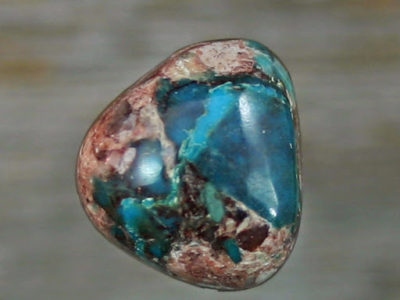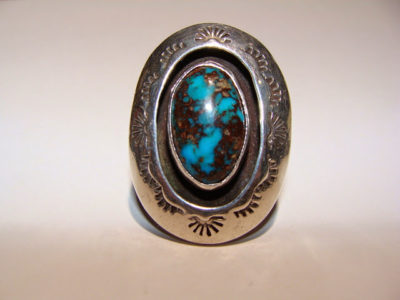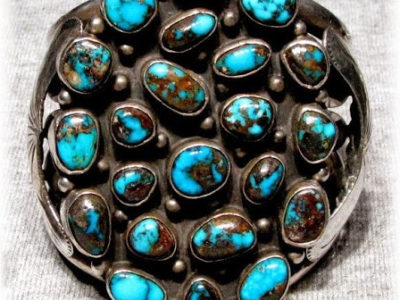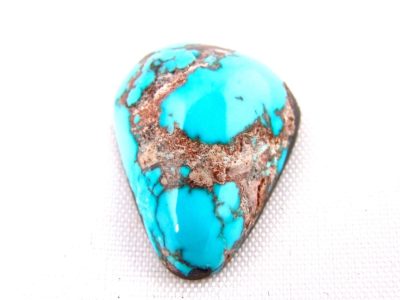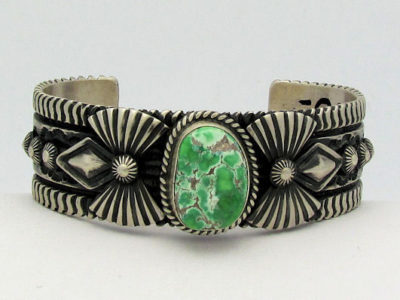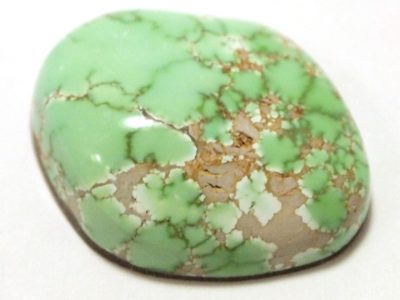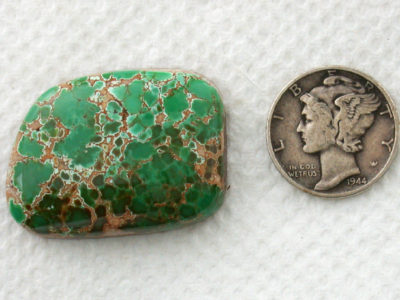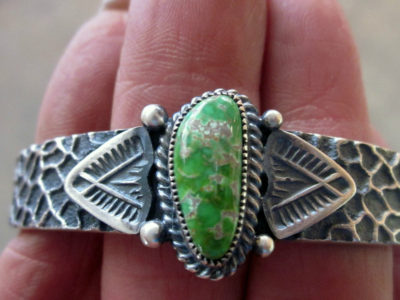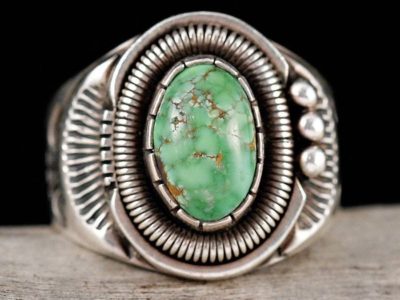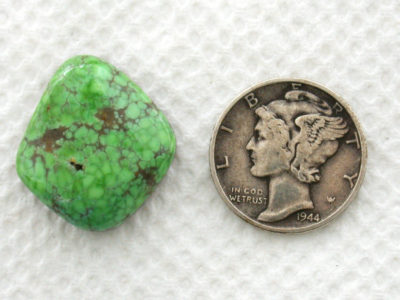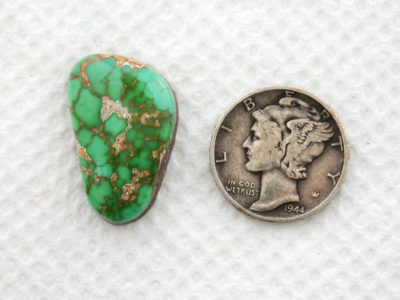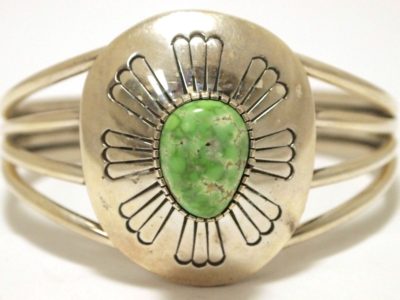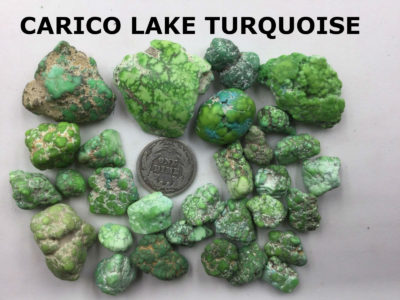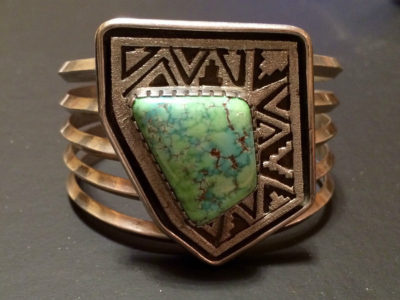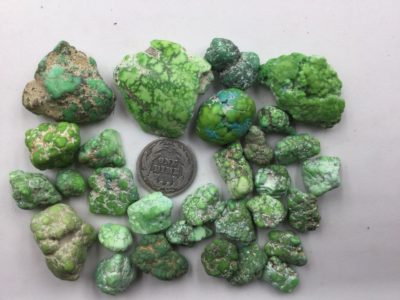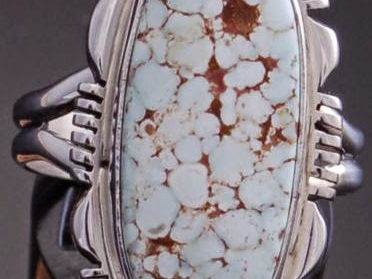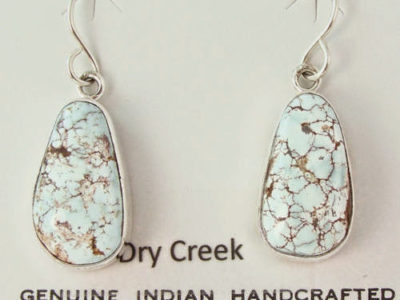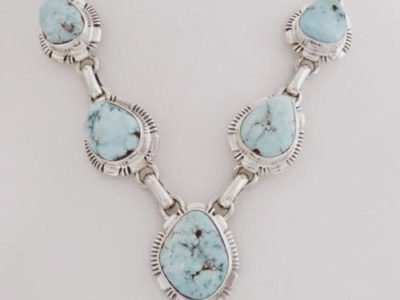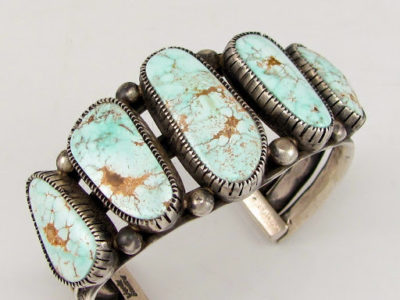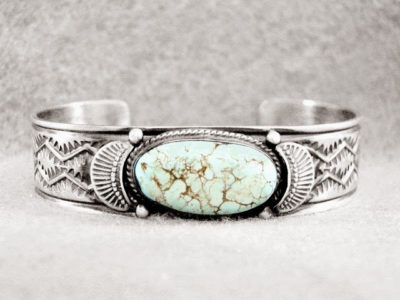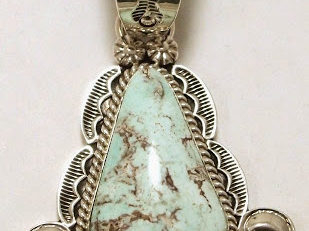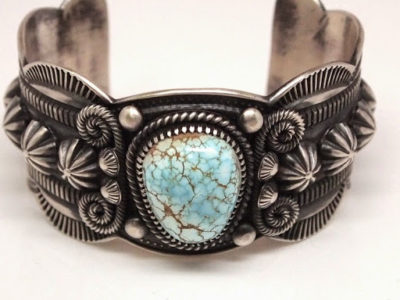
First of all, Turquoise varies in quality from Gem quality to low grade “chalk”.
-
GEM quality turquoise is HARD.
-
LOW grade turquoise is SOFT.
-
Most notably, turquoise is a hydrated phosphate of copper and aluminum and originates by the percolation of meteoric or groundwater through aluminous rock in the presence of copper. Consequently, it is often with copper deposits as a secondary mineral. Most importantly, turquoise is most often found in arid, semiarid or desert places.
Furthermore, turquoise attains it’s color from the heavy metals in the ground where it forms.
- First of all, Blue turquoise forms when there is copper present, which is the case with most Arizona turquoise.
- Secondly, Green turquoise forms when there is iron present, which is the case with most Nevada turquoise. Moreover, matrix is the host rock.
Above all, Tucson Turquoise offers many varieties of turquoise jewelry, with an emphasis on American Southwest turquoise. For example, the following is a list of turquoise varieties from the American Southwest. In conclusion, this turquoise is mainly from Nevada and Arizona. PLEASE NOTE:
Also, another key point is that many examples of turquoise exhibit certain characteristics of prominent turquoise mines but….
-
As a mater of fact, “Experts” can disagree on the particular mine from which a sample of turquoise originates.
-
In addition, Provenance is important. Unless you are the miner of the turquoise, know the miner who obtains the turquoise, or can verify the “chain of custody,” it can often be very difficult to verify the mine from which your turquoise comes from.
-
By the same token, turquoise is a natural material coming from the earth, so some Chinese turquoise closely resembles American turquoise!
-
To clarify, a single mine can produce turquoise which varies greatly in color, matrix, and hardness!
In conclusion, please click on any picture below for an expanded view!
- Royston is a district in Nevada consisting of three mines: Bunker Hill, Oscar Wehrend and the largest producer, Royal Blue. Most notably, Royston turquoise is known for its beautiful colors ranging from deep forest green to rich, light blues set off by a heavy, brown matrix. Most importantly, the Royston district is still producing some turquoise of high quality but in limited supply.
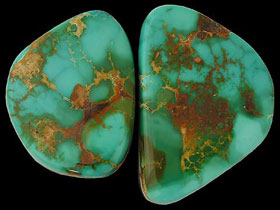
- Stormy Mountain turquoise mine is in Elko County, northeastern Nevada. Along with Blue Diamond mine, Stormy Mountain has hard, dark blue turquoise that includes a blotchy, black chart matrix. Additionally, this mine is presently not active, so it has particular appeal.
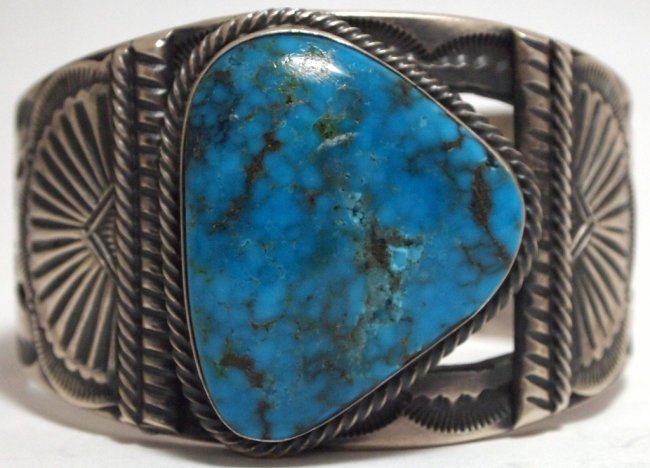
- Pilot Mountain is in Esmeralda County, Nevada. Pilot Mountain turquoise ranges in color from blue to green with a dark brown, black or reddish matrix. Also, an appeal of this stone is it’s deep blue-green colors.
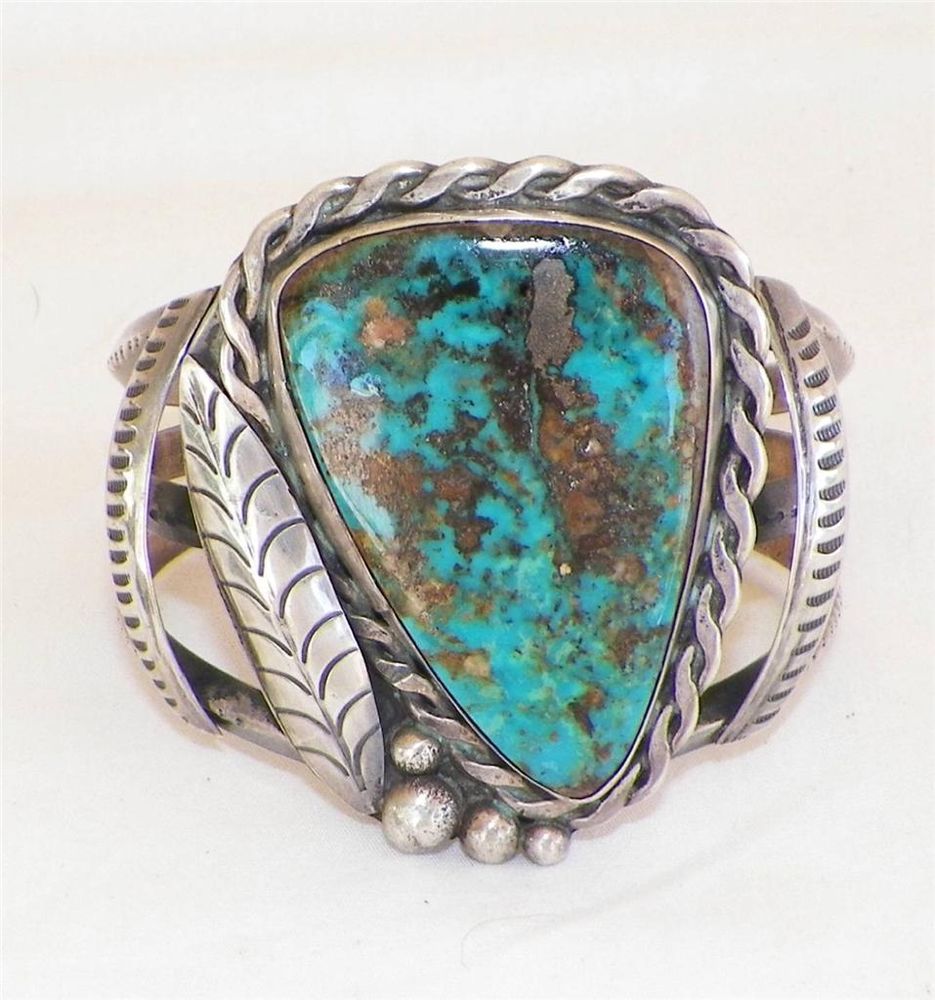
- Pauite Turquoise mine is in the same mountain as the Godber / Burnham and Drycreek Turquoise mine in central Nevada. The claims at the Pauite mine site date back to 1974, but the mine is active since 1992. The Pauite mine produces small quantities of high-grade spiderweb Turquoise. It comes in a wide ranges of blue from light to dark, with matrix in colors of black, orange, brown, and red.
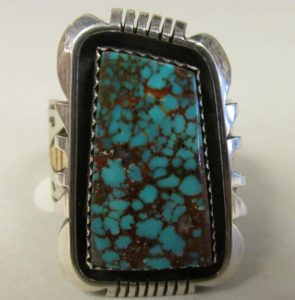
- Turquoise Mountain and “Bird’s eye” turquoise come from the same mine in Northwestern Arizona near the Kingman mine, Mineral Park Mining District. The mine was closes in the 1980’s. Turquoise Mountain turquoise is light to high blue with both web and non-web matrix. “Bird’s eye” describes stones from this mine that show areas of light blue circled with dark blue matrix resembling the eye of a bird.
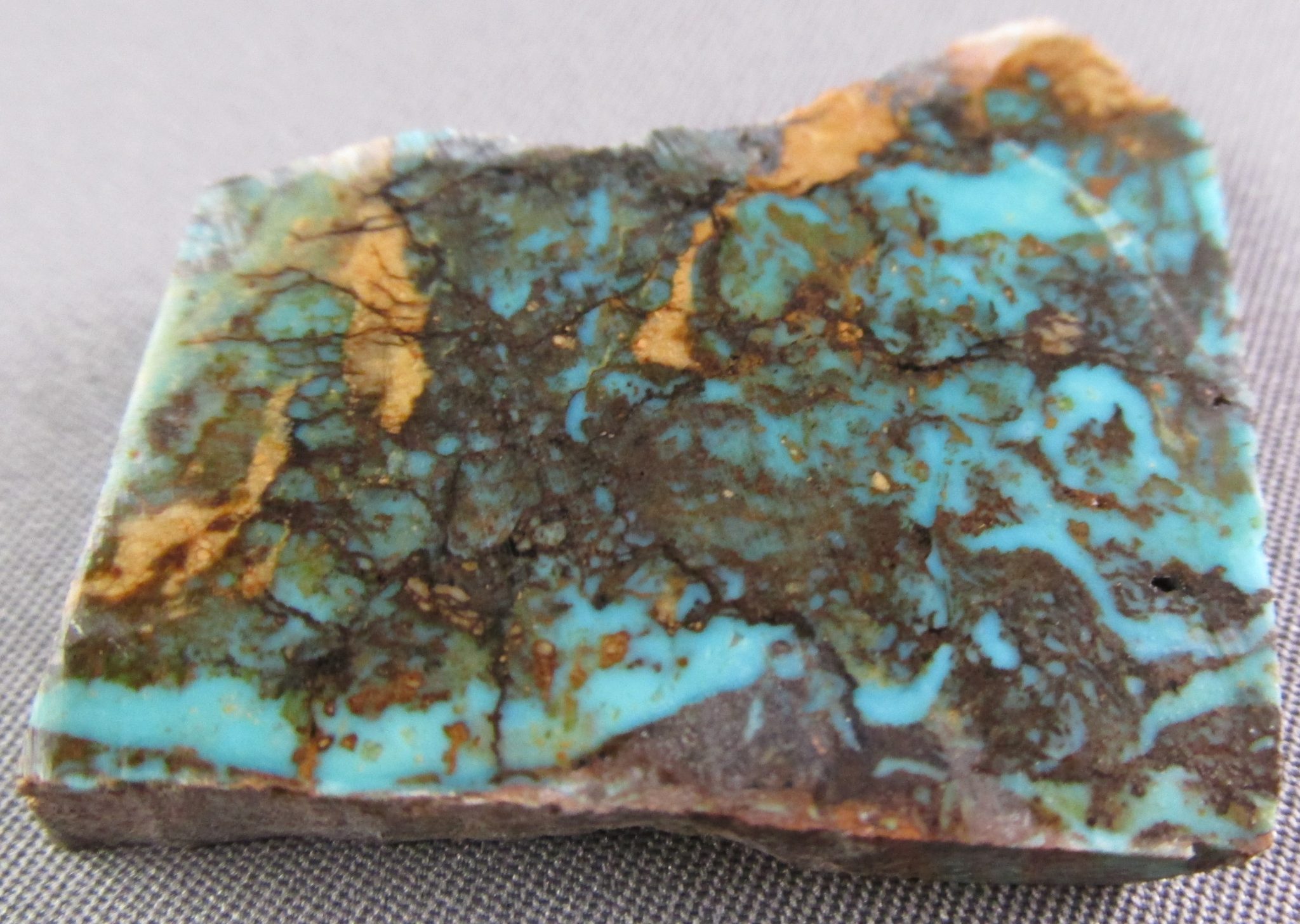
- Cerrillos turquoise mining area is between Santa Fe and Albuquerque, New Mexico. It is one of the most famous prehistoric mining districts in the American Southwest. Cerrillos is the only turquoise that forms at the base of a volcano; thus, a variety of colors developes from the minerals in the various volcanic host rocks. There are Seventy-five colors, from tan to khaki-green to rich, blue-green to bright, light colors. There are more than two hundred dig sites in the Cerrillos area, and the largest and most famous are the Blue Bell, Castilian and Tiffany mines.

- Red Mountain is in Lander County, Nevada. This mine, in the past, produces a large quantity of high grade turquoise. Consequently, the best Red Mountain turquoise rivals some of the high quality turquoise of the best mines in the Southwest. Notably, Red Mountain turquoise has an intricate, often red spider web matrix.
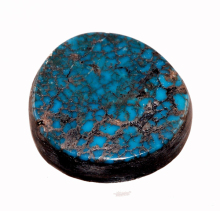
- King’s Manassa turquoise is from a mine in Manassa, Conejos County, Colorado. Manassa turquoise is best known for its rich, brilliant greens and golden matrix. Blue and blue-green turquoise is in these deposits as well.

- Kingman mine is in Mohave County in Western Arizona. The copper mining in the Mineral Park Mining District around Kingman keeps producing a larger supply of turquoise throughout the years. The matrix of most Kingman is naturally white but sometimes black die produces contrast .

- Cripple Creek turquoise mine is in Teller County, Colorado and is found when miners looking for gold in the area also found turquoise deposits. Two separate mines are currently active in the area both under the Cripple Creek name.
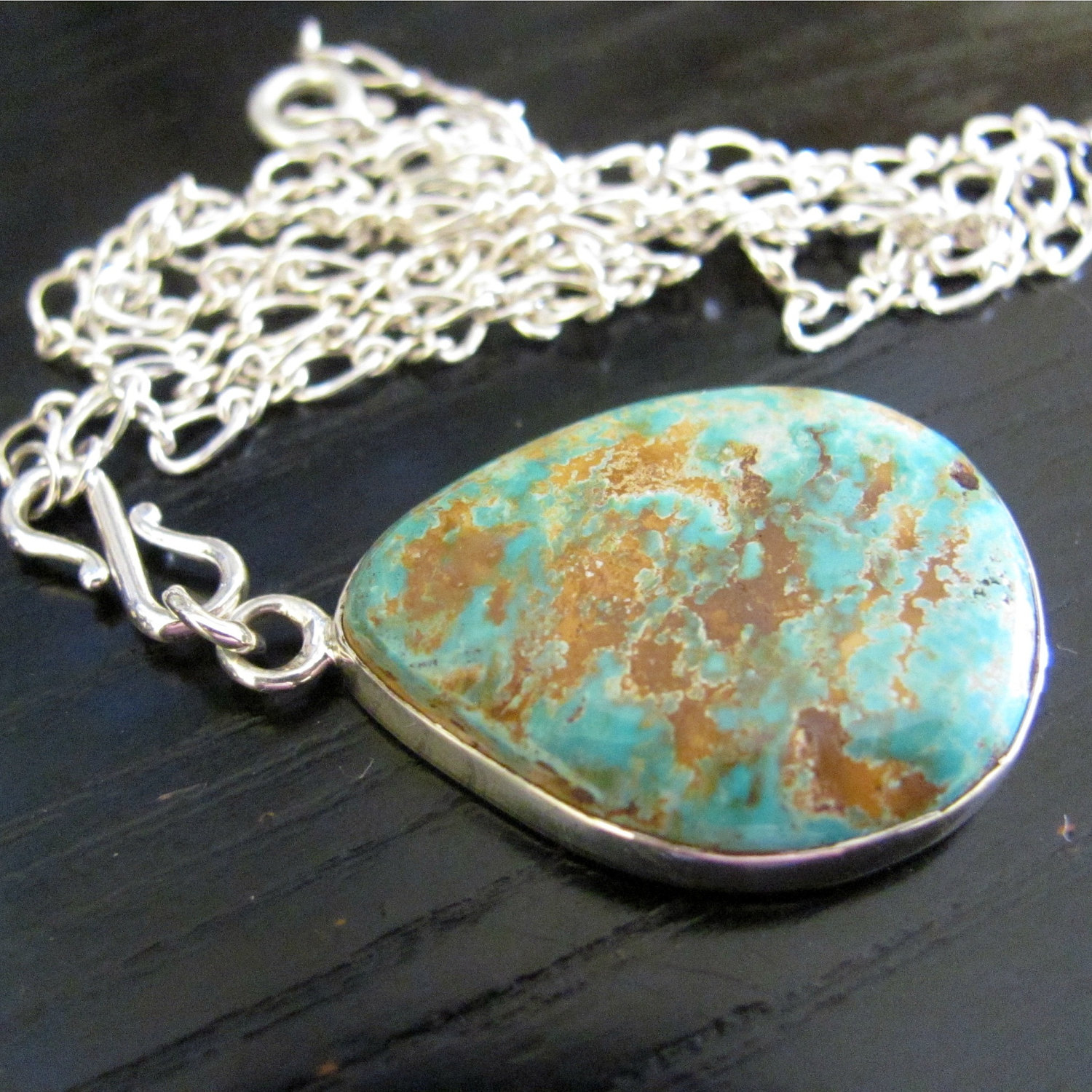
- Blue Gem turquoise is approximately 6 miles south of Battle Mountain, Nevada, within a large copper-mining operation. Blue Gem mine produces almost every shade of green and blue from intense blues to deep green combinations with a hard, irregularly distributed matrix. Of the multiple Nevada miners call Blue Gem, the Battle Mountain Blue Gem mine, which begins production in 1934, yields the most valuable Blue Gem turquoise. This is due to its rich color and hardness. This mine is now CLOSED and is highly sought after by collectors.
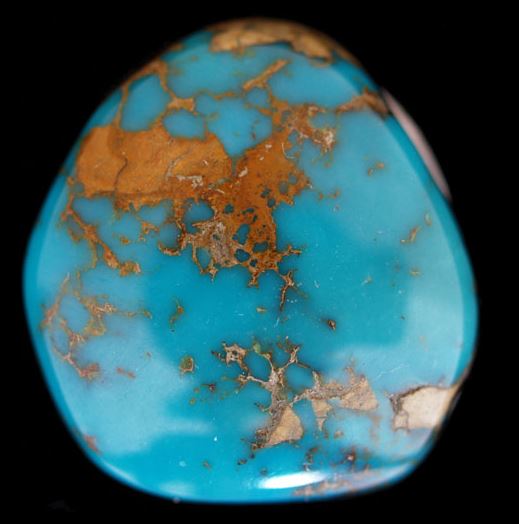
- Fox is one of Nevada’s most productive turquoise mines. The area produces a huge amount of good quality green or blue-green stone with a distinctive matrix.

- Number 8 mine is in Calin, Nevada, and in the past is a gold and copper mining operation on the West side of the Tuscarora Mountain Range. Number 8 turquoise is famous for its black, golden-red and brown spider web matrix set off with the unique bright blue turquoise background. The mine is now no longer producing and Number 8 turquoise is valuable.
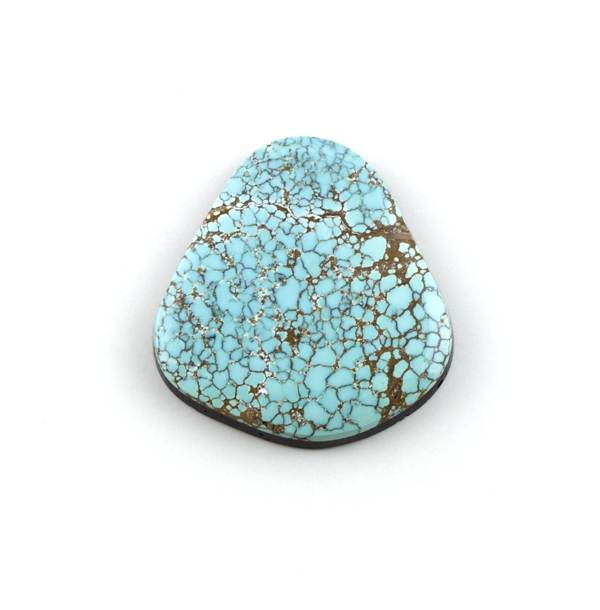
NUMBER 8 TURQUOISE SLIDESHOW ↑
-
Sleeping Beauty mine, near Globe, Arizona, once produces a solid, light blue color with no matrix and is in many styles of American Indian jewelry. A favorite of Zuni silversmiths, Sleeping Beauty is often in needlepoint, petite point and inlay jewelry because of its consistency in color and is easy to cut. This mine was one of the largest in North America and is now CLOSED. Sometimes black is added to sleeping beauty to add definition, as in the below example.

SLEEPING BEAUTY TURQUOISE SLIDESHOW↑
-
Lone Mountain aka Blue Jay Mine turquoise mine, in Esmeralda County, Nevada, once produces a great variety of turquoise. Usually found in nodules it’s finest examples are spider web turquoise as well as clear, deep-blue stones. Among “classic” American turquoise, only Lander Blue is more valuable.

LONE MOUNTAIN TURQUOISE SLIDE SHOW ↑
- Morenci turquoise is in Southeastern Arizona, Greenlee County. It once produces a high to light blue in color with an unusual matrix of irregular iron pyrite or “fool’s gold” that when polished, often looks like silver. The name comes from the large open pit Morenci copper mine where a great deal of turquoise from. The mine is no longer in operation, which makes it collectible. (Example from my personal collection)

MORENCI TURQUOISE SLIDESHOW↑
- Lander Blue turquoise is from a mine in Lander County, Nevada and originates in 1973. It produces some of the most beautiful spider-webbed turquoise that miners ever find. It is the rarest and the most valuable turquoise. Less than 110 pounds of this beautiful spider-web turquoise is available.
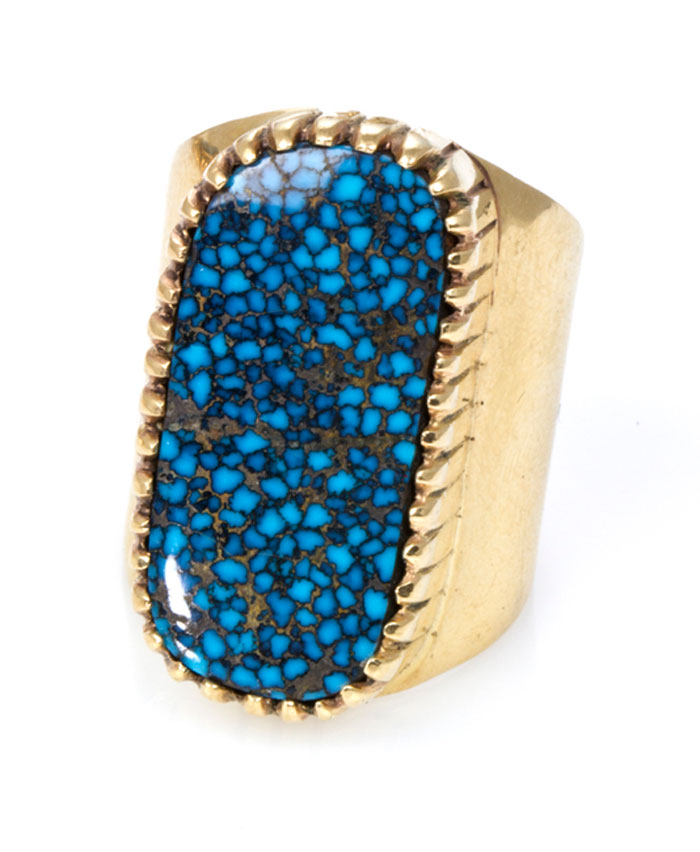
- Bisbee turquoise is from the Lavender Pit copper mine that is no longer in operation. Bisbee turquoise is famous for its deep blue color and smoky black matrix. It is one of the most highly collectible variety of turquoise.
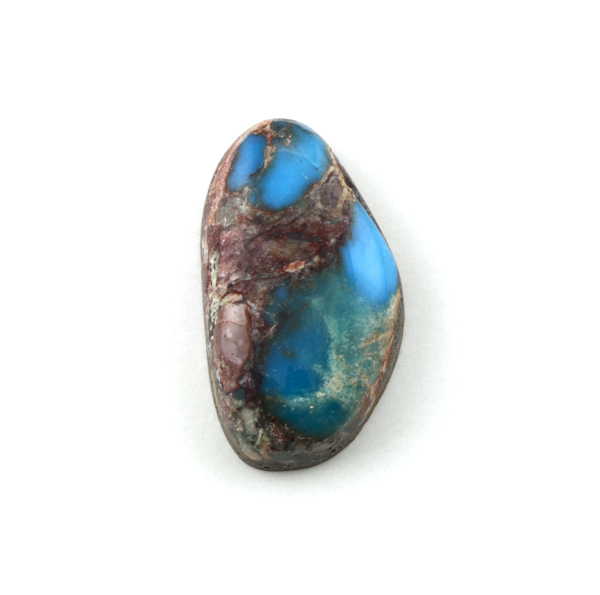
BISBEE TURQUOISE SLIDESHOW↑
- Carico Lake turquoise is also the name of the location of the mine on a dry lake bed in Lander County, Nevada. It’s clear, iridescent, spring-green color is due to its zinc content and is highly unique and collectible. Carico Lake turquoise can also be a dark blue-green color with a black, spider web matrix. Mines in this district also produce faustite, an apple-green mineral similar to turquoise but is a separate mineral. (Example from my personal collection).
CARICO LAKE TURQUOISE SLIDESHOW↑
- Damele (Variscite – see definitions page) aka Damali mine is in east-central Nevada near the Carico Lake mine. Damele turquoise is quite distinctive because the zinc content turns the stone yellow-green and increases its hardness. The matrix of Damele is web with a brown to black matrix. (Examples from my personal collection).


- Dry Creek turquoise mine is on the Shoshone Indian Reservation near Battle Mountain, Nevada. The lack of any specific color consistency makes this stone distinctive and unique from other turquoises. Because this turquoise is as rare as the sacred buffalo, the Indians call it “Sacred Buffalo” Turquoise.
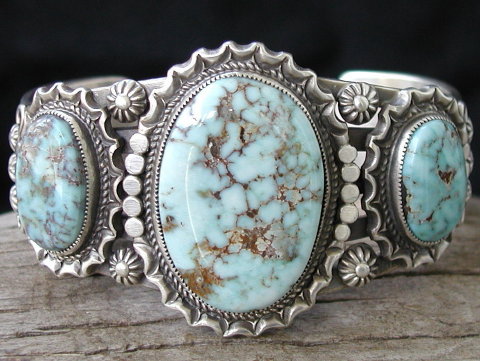
DRY CREEK TURQUOISE SLIDESHOW↑
- Godber-Burnham mine is east of Austin, Nevada and is found in 1932. First under the name “Last Chance”, it later sells to Frank Burnham and then in 1934 to Walter Godber. The turquoise ranges from medium to dark blue usually with a beautiful spider webbing. It can also have a very dark or black mottling forming blotches and veins running through the stone.

- Ajax mine is in south-central Nevada in the Royston area. A relatively new mine that yields stones from light blue with darker blue veins to a predominate dark green with light blue veins. The dark green with light blue veins is quite unusual for turquoise.
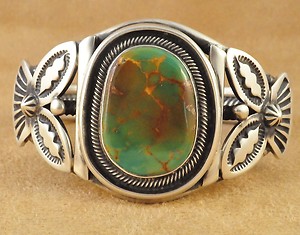

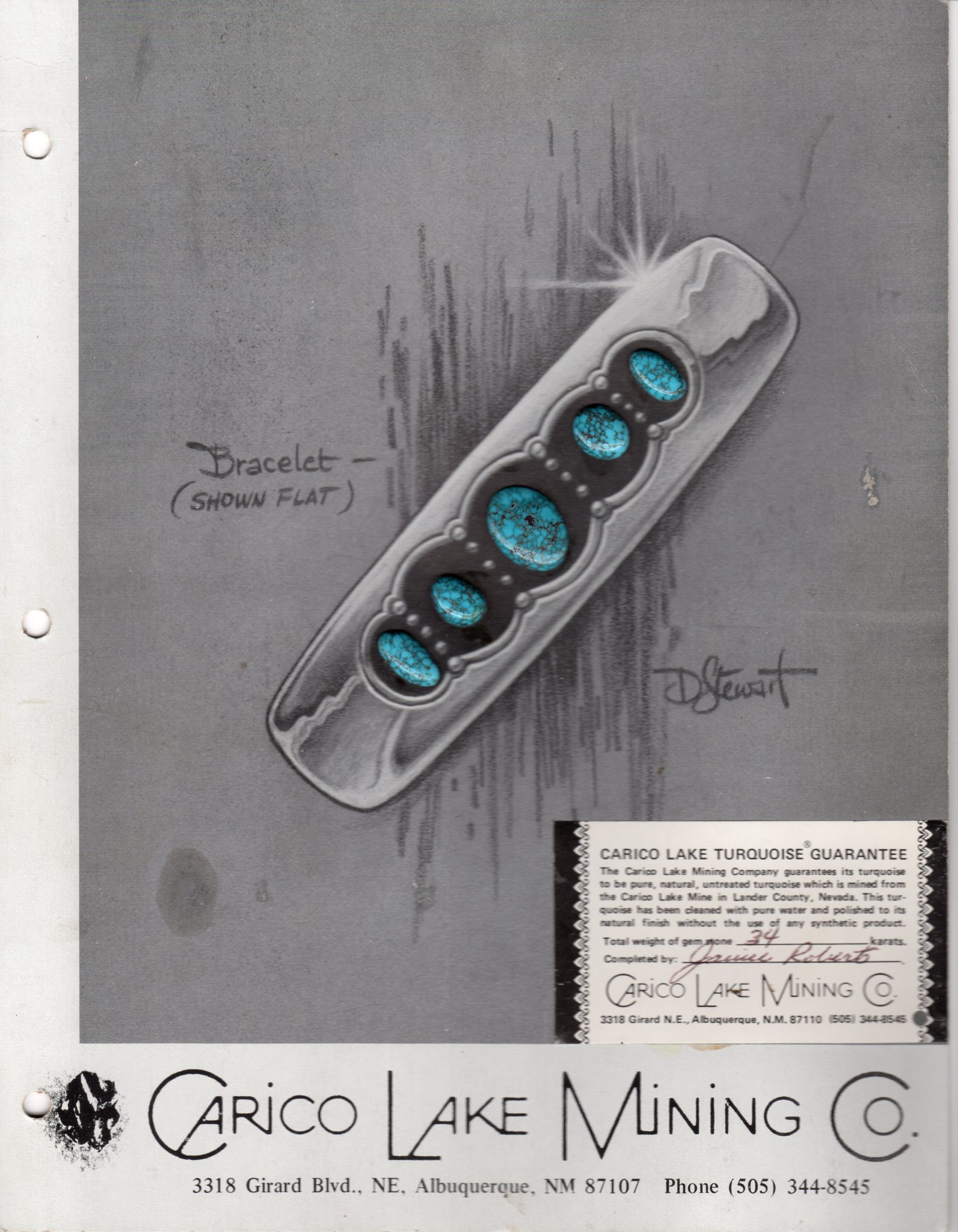
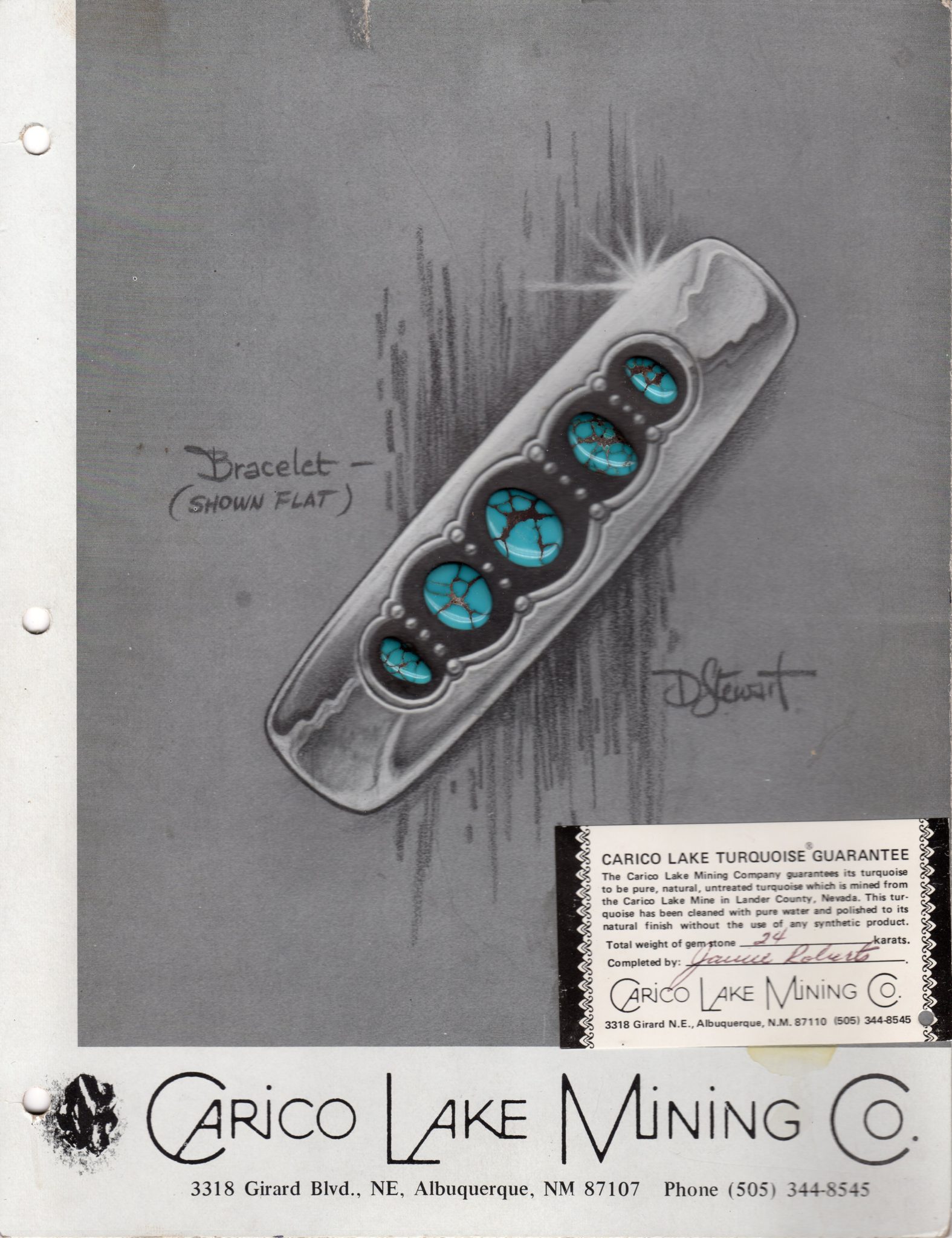
Finally, to view more examples, click ⇒ HERE
Tucson Turquoise 1990 – 2025 © Schannep Ventures L.L.C. ALL RIGHTS RESERVED
